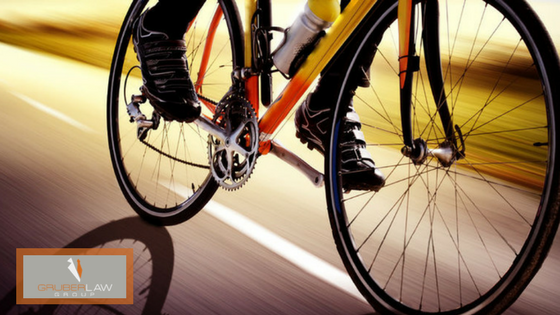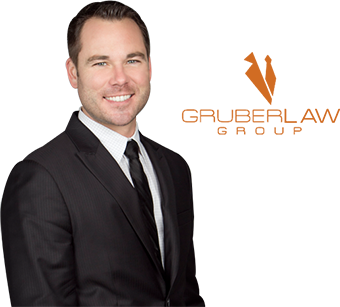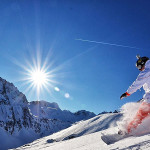 San Francisco is simultaneously one of the most bike-friendly cities in the country and one of the most dangerous, according to data from the California Office of Traffic Safety (OTS). OTS data from 2014, the most recent available year for study, shows that San Francisco ranks #1 in the state for bicycle injuries and fatalities. This data may overlook the fact that, relative to the 184 percent increase in riders over a decade, cyclist fatalities have stayed flat, but it does show that bicycle accidents in San Francisco are all too common.
San Francisco is simultaneously one of the most bike-friendly cities in the country and one of the most dangerous, according to data from the California Office of Traffic Safety (OTS). OTS data from 2014, the most recent available year for study, shows that San Francisco ranks #1 in the state for bicycle injuries and fatalities. This data may overlook the fact that, relative to the 184 percent increase in riders over a decade, cyclist fatalities have stayed flat, but it does show that bicycle accidents in San Francisco are all too common.
This fact should by no means worry bicycle riders trying to enjoy a healthy, efficient, liberating and environmentally responsible way to travel or exercise. It just means that bicyclists will have to adjust their approach to remain vigilant. Also, know that if you are in a collision, a San Francisco bicycle accident attorney can help you more effectively assemble your case, increasing your likelihood of obtaining fair compensation.
To make cycling more fun and less risky, follow these 5 tips for safe biking in San Francisco.
Know the Rules of the Road
San Francisco has a number of traffic laws governing bicycles. Just because many cyclists ignore these laws does not mean they don’t exist!
Some of the most important laws to remember include:
- Stop at all stop signs and traffic lights. (CVC 21200)
- At intersections, stop behind the marked line and do not block the crosswalk. (CVC 21950, 21455)
- Yield right-of-way to pedestrians at all times. Even if they are jaywalking, you have a responsibility to avoid putting them in danger. (CVC 21954 (b))
- No riding on the sidewalk! If you are over the age of 13 and not on a designated bike path, it’s illegal. (SF Transportation Code Sec. 7.2.12)
- Pass only on the left. Some drivers may get annoyed, but it’s the law. (CVC 21202)
- Take the lane when you need to! While bike riders are encouraged to stay to the right and use available bike lanes, know that you can occupy the center of a lane legally at any time to avert danger or help maneuver more safely. (CVC 21202, 21208)
- Bike reflectors and at least one front white light are required at all times. A rear flashing light is also highly recommended. (CVC 21201)
- Ride with at least one ear free of headphones at all times. (CVC 27400)
Ride Like Everyone’s Out to Get You
Defensive riding techniques are critical for increasing your awareness of certain risks. Essentially, defensive riding involves visualizing scenarios where certain circumstances could translate to risks. If you are approaching a T intersection on a busy road where an approaching car on the side street has a stop sign, start coasting or braking just in case the guy suddenly blows past the stop. Similarly, when riding next to a vehicle, never assume they can see you and won’t abruptly merge into your lane.
Imagine scenarios like this can help you predict danger and take fewer chances. A common piece of advice when trying to establish whether someone may or may not be aware of you is to make eye contact.
Find Bike-Friendly Routes
No matter how safely you try to ride, certain intersections in downtown San Francisco are incredibly dangerous. According to data from the Vision Zero project, 70 percent of all serious or fatal injuries from cycling accidents happen in just 12 percent of the city’s roads. Downtown, between Potrero and North Beach heading up to the Oakland Bay Bridge, is the most dangerous area for cyclists by far. 14th and Octavia Street are also hotspots for serious cycling accidents.
If you can, take the long way around these areas, and use bike paths to your advantage. The city is always expanding the mileage for these paths, but some areas lag behind. Remember that a direct shortcut along a busy road usually carries a much higher risk than a slightly longer route.
Prepare for Adverse Weather
It’s no secret that San Francisco can get damp throughout the year. Prepare for the inevitable slick roads with moderately-grippy tires that have water-diverting treads. Install front and rear fenders to keep water and road grime from kicking up and obscuring your vision. You may also want to invest in brighter lights so that someone can see you even in the thick of the morning fog.
When it is wet outside, slow down. Keep an eye on your speed, and occasionally drag your brakes to keep them dry. Cross all Muni tracks carefully and 100 percent perpendicular to the tracks. The Muni has caused more cyclists to embarrassingly eat pavement than anyone can count!
Lawyer Up With a San Francisco Bicycle Accident Attorney if You Are Struck
Many times, a bicycle rider is clearly not at fault for an accident yet will not receive compensation for their injuries. All too often, the rider will not even make a formal report, only to suffer from unexpected medical costs and complications down the road.
Assert your right to fair compensation and ensure you can cover all your medical bills by working with a bicycle accident attorney in San Francisco any time you are injured. They will help you assemble the needed documentation, strategize your case, and file the appropriate paperwork to increase your chances of a successful injury claim.
Ride safe on the roads out there, and do not hesitate to contact me if you have been injured to receive a free consultation.









Leave a Reply